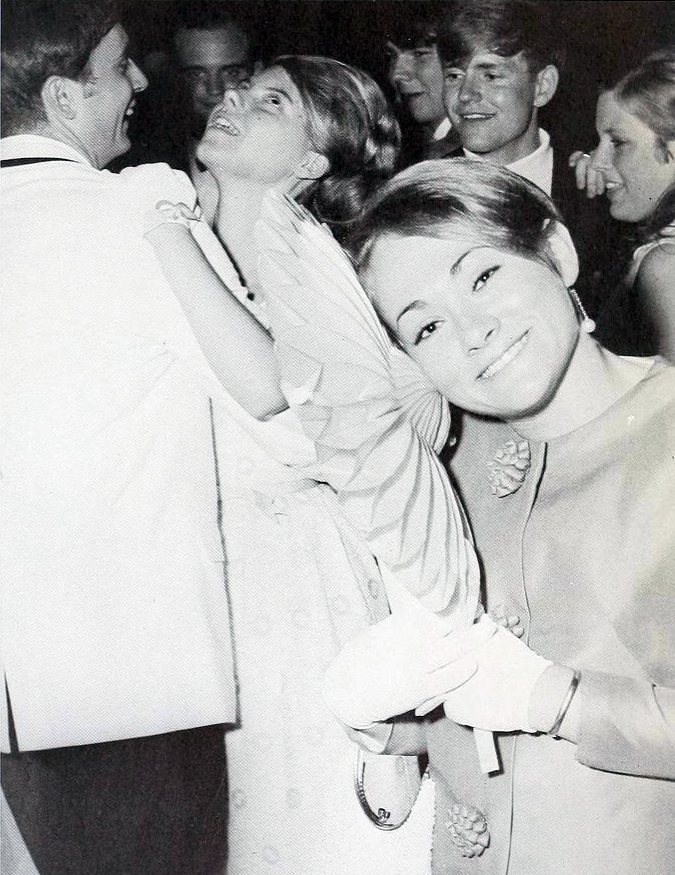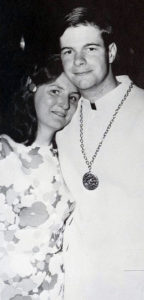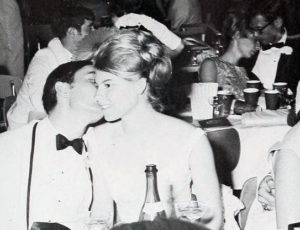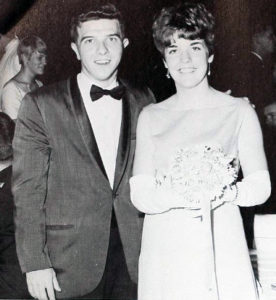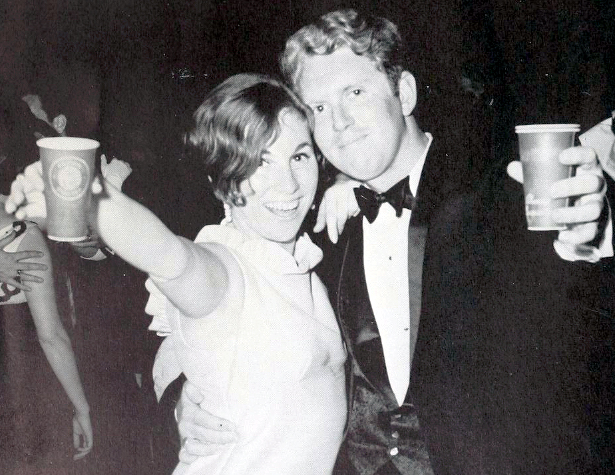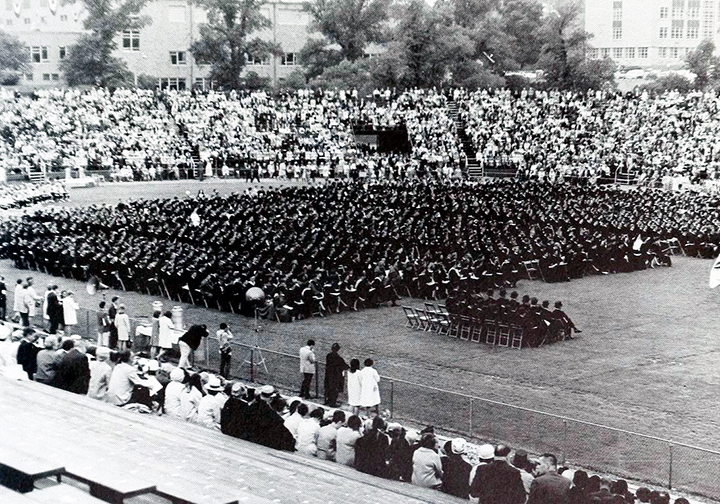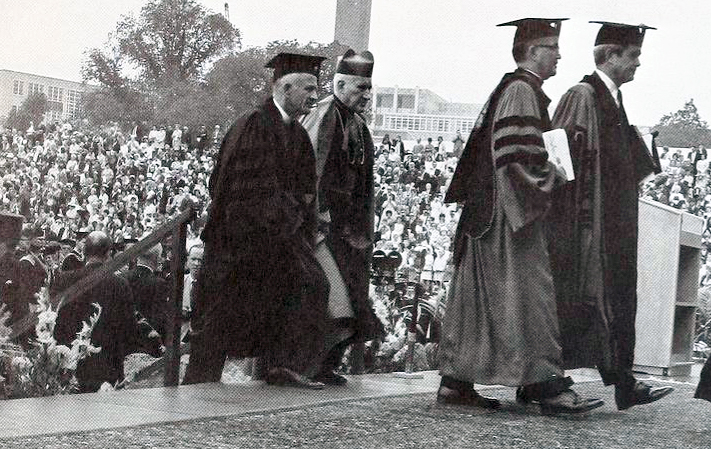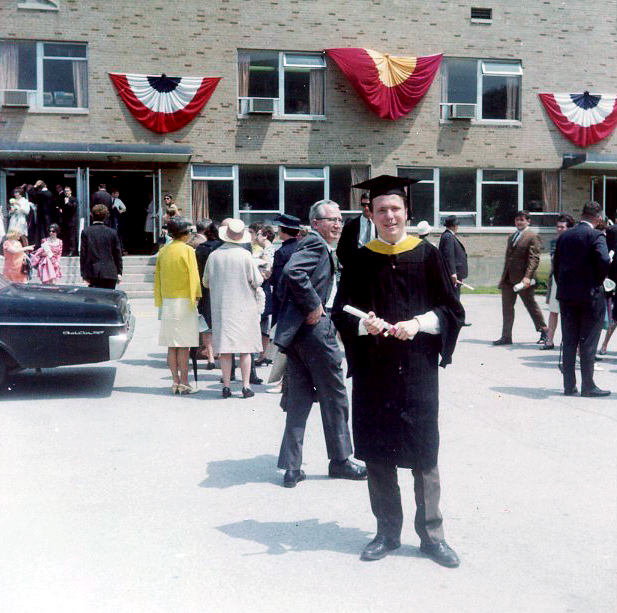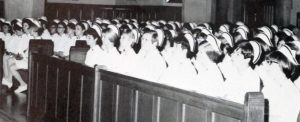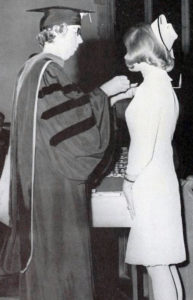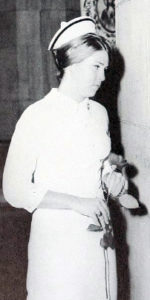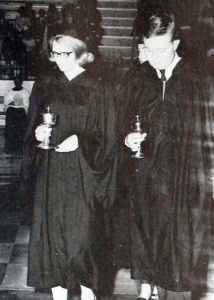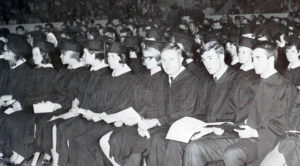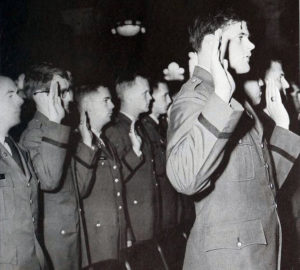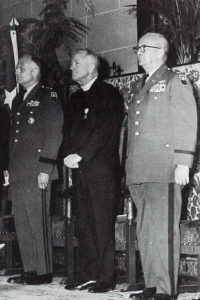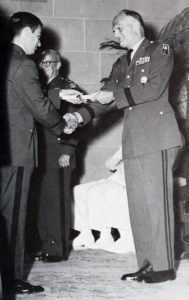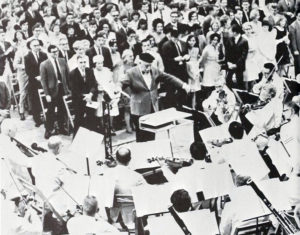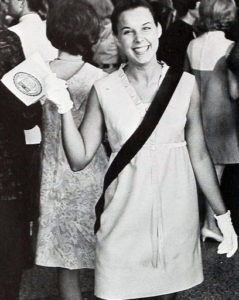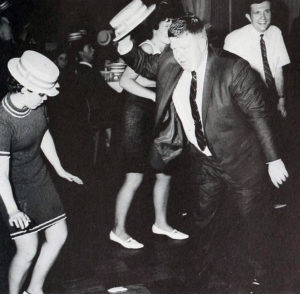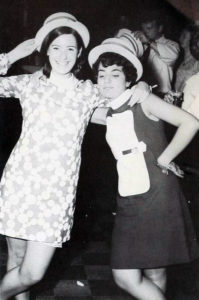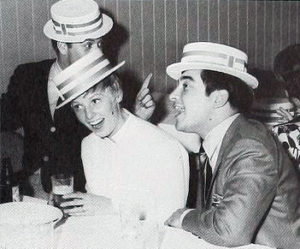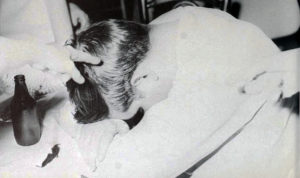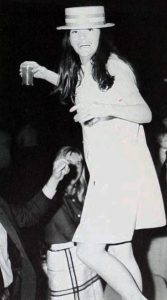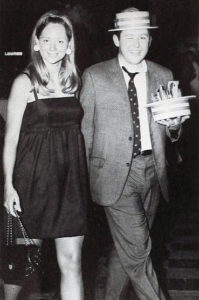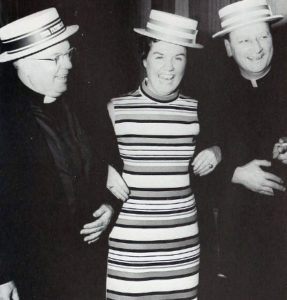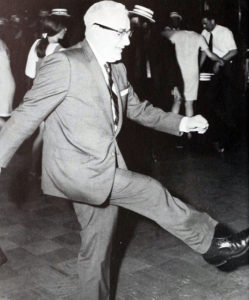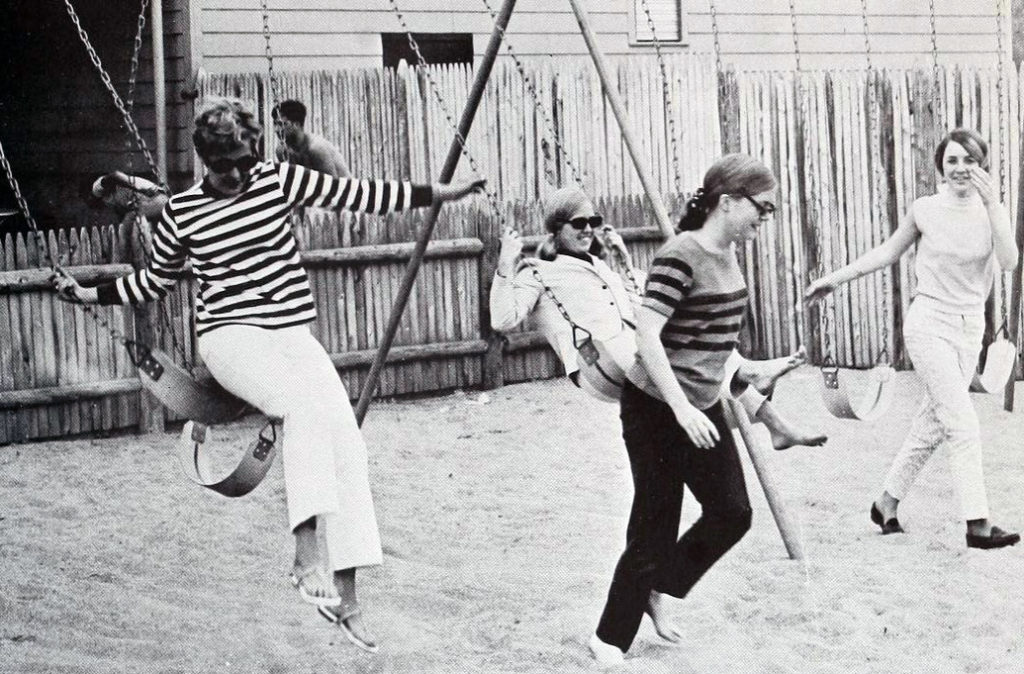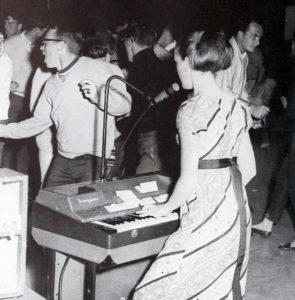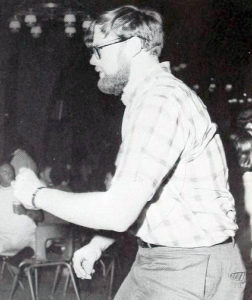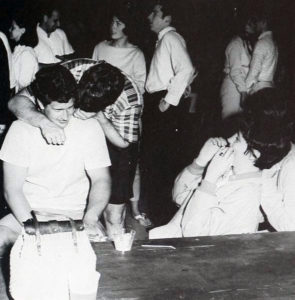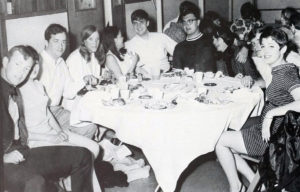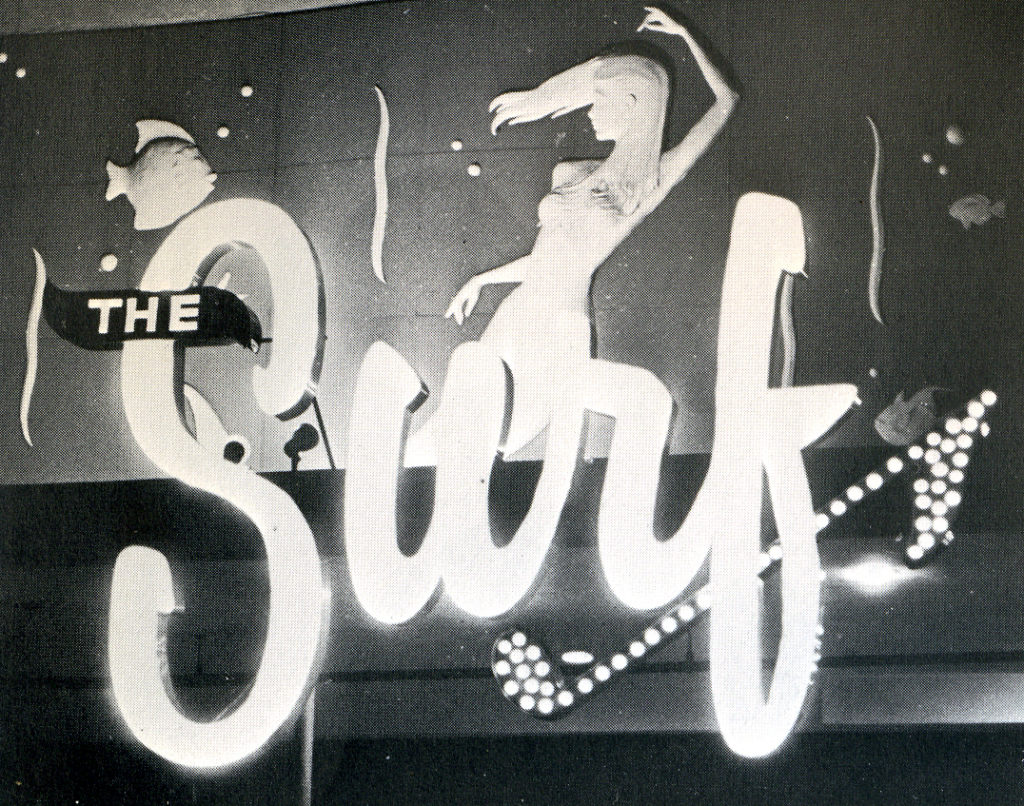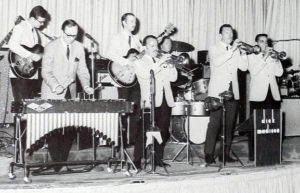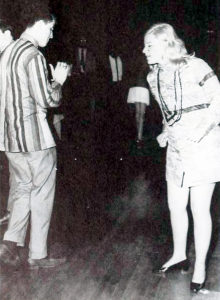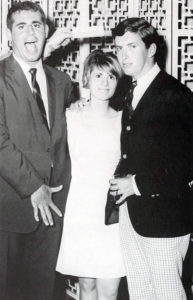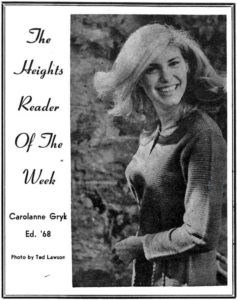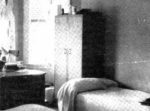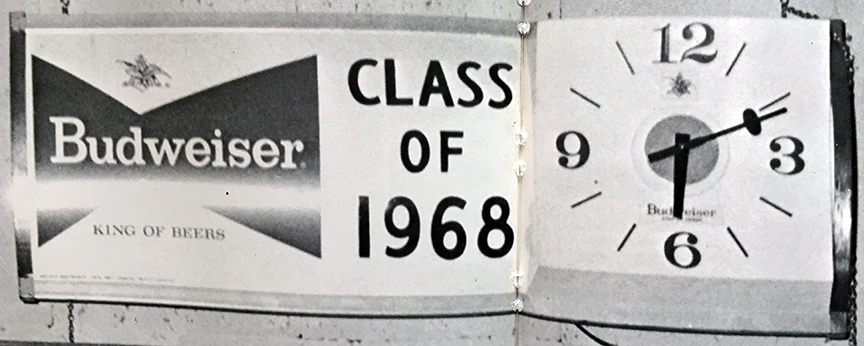
This would fetch a nice price at auction at Reunion, wouldn’t it? I wish. Anybody know where it was located? Sub Turri photo.
Things . . . and campus buildings . . . and places where we had fun . . . gone. One of the products of time passing is that some of those disappear. Some of us may be happy that things and buildings have been replaced and some of us may feel nostalgic about what once was.
Campus buildings
Young alumni with whom I’ve talked about BC in our day and shown them pictures of the campus are often surprised at the degree of change. Hey, so are we! Classmates coming back for reunion clamored for the bus tours that will show the campus and they are “sold out.”
It’s probably safe to say that BC has been under construction since 1913, when Gasson Hall got built on the new Chestnut Hill Campus. Over the years, the campus has been transformed and, based on BC’s current strategic plan, will be significantly changed anew. In our day, upper campus was the focus of residential life. Now, and even more so in the future, that focus is lower campus, which used to be still mostly reservoir in our time.
Here are some examples of BC buildings that were integral, in varying degrees, to our lives as students and alumni that we will never see again, except in pictures.
Roberts Center
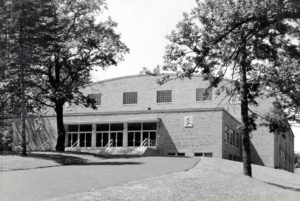 The site of many basketball games, concerts, speeches, etc., Roberts opened in 1958. It was the site of 327 varsity basketball games, with the last games taking place in spring 1988. BC won 246 of those games. Roberts was also the hub of the Athletics Department, with administrators and coaches having offices there. It was also the home of ROTC, and featured a firing range in the lower level.
The site of many basketball games, concerts, speeches, etc., Roberts opened in 1958. It was the site of 327 varsity basketball games, with the last games taking place in spring 1988. BC won 246 of those games. Roberts was also the hub of the Athletics Department, with administrators and coaches having offices there. It was also the home of ROTC, and featured a firing range in the lower level.
One factor that led to the demise of Roberts and McHugh Forum was a Big East Conference requirement that teams play their games in settings of no fewer than 6,500 fans. With a capacity of 4,400, Roberts fell obviously short of that requirement, which pushed several of BC’s “bigger” games to Boston Garden during the mid-1980s.
Where Roberts Center once stood is now a science building, Merkert Chemistry Center.
McHugh Forum
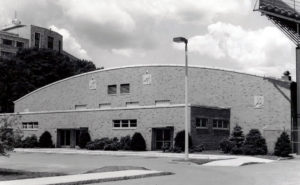 McHugh was an example, with Roberts, of the “classic” bowed-roof arena of the 1950s. As classmate Reid Oslin once wrote, when he was assistant director of athletics, “McHugh was never a pretty place.”
McHugh was an example, with Roberts, of the “classic” bowed-roof arena of the 1950s. As classmate Reid Oslin once wrote, when he was assistant director of athletics, “McHugh was never a pretty place.”
It was where we first gathered as BC students, though perhaps in separate groups, to go through “orientation” in September 1964. It was also where students in A&S received their degrees following the commencement ceremonies in Alumni Stadium on June 3, 1968.
Mixers were held in McHugh. We watched “televised” away football games against teams like Miami. And BC played hockey there. Lots of hockey. Reid penned a “look back” at McHugh for Boston College Magazine in its spring 1986 issue (below).
-
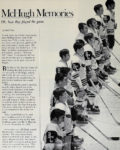
-
Page one
-
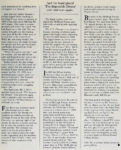
-
Page two
Replacing both McHugh and Roberts is Conte Forum, an athletics and event center that seats 8,600 for basketball and just under 8,000 for hockey.
Alumni Hall and Philomatheia Hall
These weren’t places that we frequented as students, but, certainly in the case of Alumni Hall, many of us probably spent some time there after graduation.
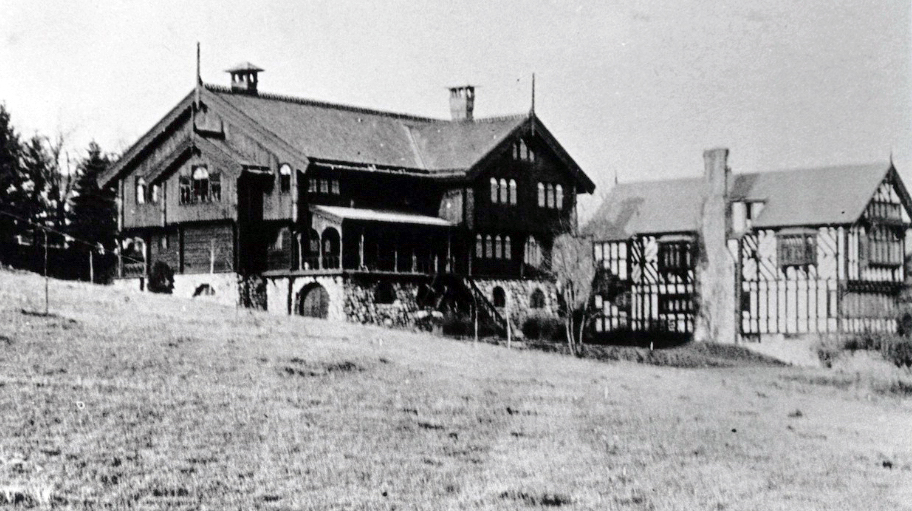
Philomatheia Hall (l) and Alumni Hall. Before our time and when Commonwealth Avenue must have been a lot narrower.
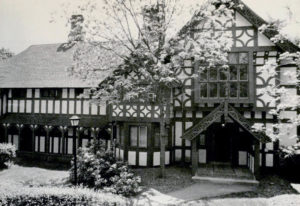
Alumni Hall
Alumni Hall (74 Commonwealth Avenue) was of distinctive architecture. Tudor to the extreme? :) The building contained the offices of the Alumni Association, of course, and its large interior spaces, at least compared to other campus facilities, made it the site of both alumni and University events. Among other services it provided for BC grads, including being the site of several wedding receptions, it was a pretty good post-football game party scene in the ’70 and ’80s. Maroon Solo cups. :)
At one point, in the ’60s, the Alumni Hall property contained a small aviary, which housed “Margo,” a live eagle serving as the BC mascot. The raptor was later moved to Franklin Park Zoo for more appropriate residence.
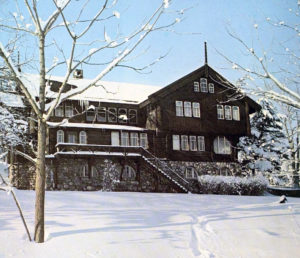
Philomatheia Hall from the side facing campus.
BC purchased what became Philomatheia Hall (86 Commonwealth Avenue) in 1920 to provide a location for the Philomatheia Club, founded in 1915, a fundraising organization with members being women who represented a “ladies’ auxiliary” to the all-male Boston College. This was before, of course, the schools of nursing and education.
The buildings were neighbors on Commonwealth Avenue, but very different in appearance. The History of Boston College by Charles Donovan, S.J., describes Philomatheia Hall as “a gracious Norwegian chalet.”
Both buildings were taken down in 1988 (tough year for several buildings on campus) to be replaced by residence halls initially called Commonwealth Avenue Dormitories, later named after benefactors. The Alumni Offices initially moved to Putnam House on the Newton Campus, formerly the campus of Newton College of the Sacred Heart. The Alumni staff joined the Advancement staff on the Brighton Campus, soon after its purchase by the University in what has become Cadigan Alumni Center.
The summer 1986 issue of Boston College Magazine carried an article with anecdotal recollections of Alumni Hall (below).
-
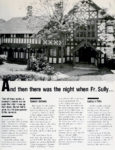
-
Page one
-
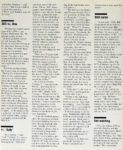
-
Page two
-
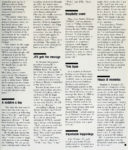
-
Page three
St. Thomas More Hall
More Hall was the home of the BC Law School in our day. When the Law School moved to the Newton Campus in 1975, More Hall became an administrative building, housing such offices as the treasurer, human resources, and development.
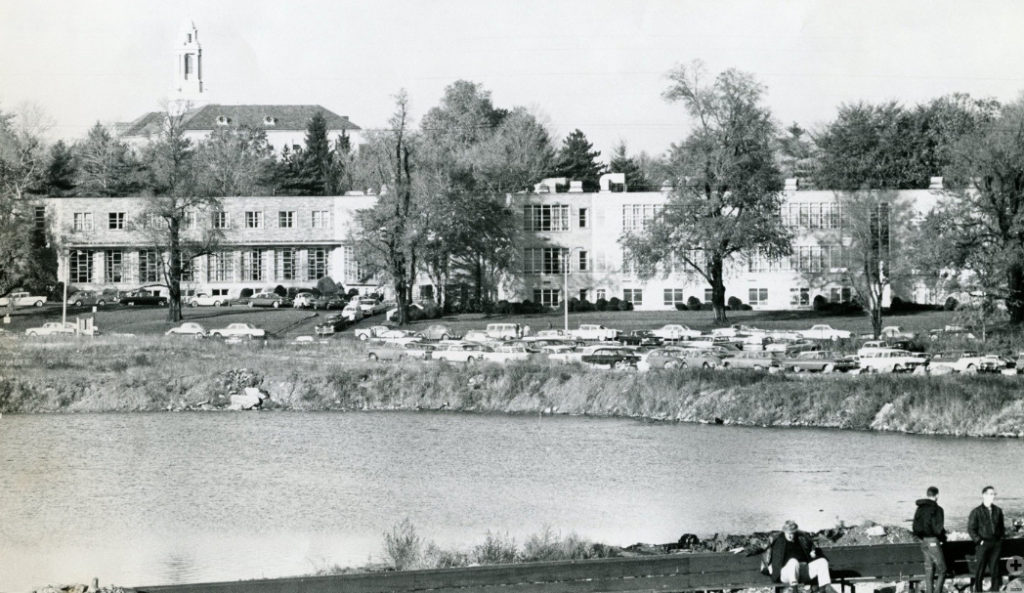
St. Thomas More Hall, as seen from the other side of the Reservoir, since filled in.
Administrative offices in More Hall moved to the Brighton Campus soon after it was purchased, and More Hall was torn down in spring 2015. On the site now are the Thomas More Apartments, a student residence hall.
Off-campus
There were also the off-campus standbys. The buildings are most often still around, but the establishments are gone.
-
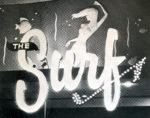
-
The Surf, Nantasket Beach, was a regular, including for Senior Week 1968. Sub Turri photo
-

-
“The Tam,” our Mary Ann’s, at 1648 Beacon Street, Brookline, remains a drinking establishment. But The Publick House, there now, is a step — maybe a flight of steps — up in quality.
-

-
Located at 1314 Commonwealth Avenue, Allston, this has gone through several iterations and may now be vacant.
-
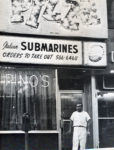
-
Pino’s is still there, at Cleveland Circle. Revamped, of course, but you can still get pizza and subs.
Technology
We had “technology” back then, right? BC, for example, actually did have a computer . . . a big one. And some of our technology was hand-operated, like the “word processor” in the gallery below. Here are examples of techology-related items you don’t see much any more.
-
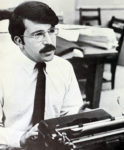
-
Classmate Richard Sawaya on a “word processor”
-

-
BC’s computer
-

-
Oh, analog
-

-
Where would Superman change now?
-

-
Spin the dial
-
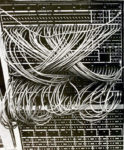
-

-

-

Other
Remember the mention of the firing range in Roberts? Here’s a picture from the 1968 Sub Turri of our coed rifle team. Did that stop when ROTC left?
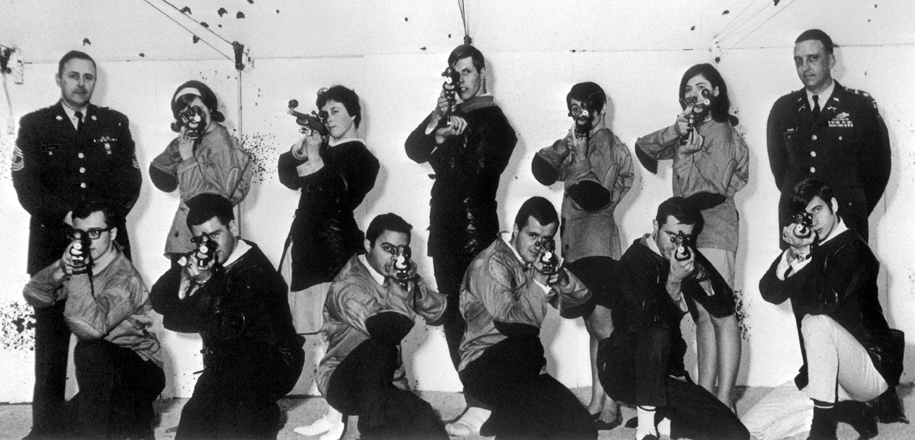
Also leaving with ROTC was the Lewis Drill Team. Now the flag-wavers at football games are all young women!
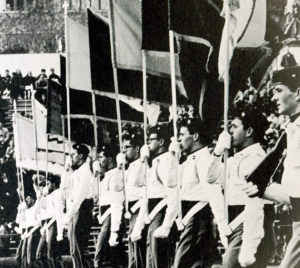
And finally, nuns. There are still nuns, of course, but most do not wear these habits. Brings back memories though.
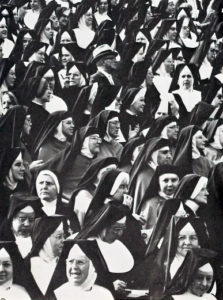
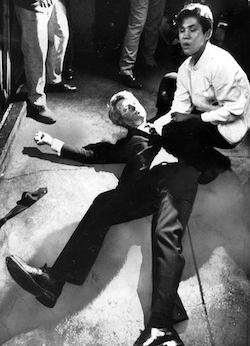 On the early morning of June 5, 1968, classmate and roommate Richard Sullivan shook me awake at about 3 or 4 to tell me, “Bobby Kennedy’s been shot.”
On the early morning of June 5, 1968, classmate and roommate Richard Sullivan shook me awake at about 3 or 4 to tell me, “Bobby Kennedy’s been shot.”
